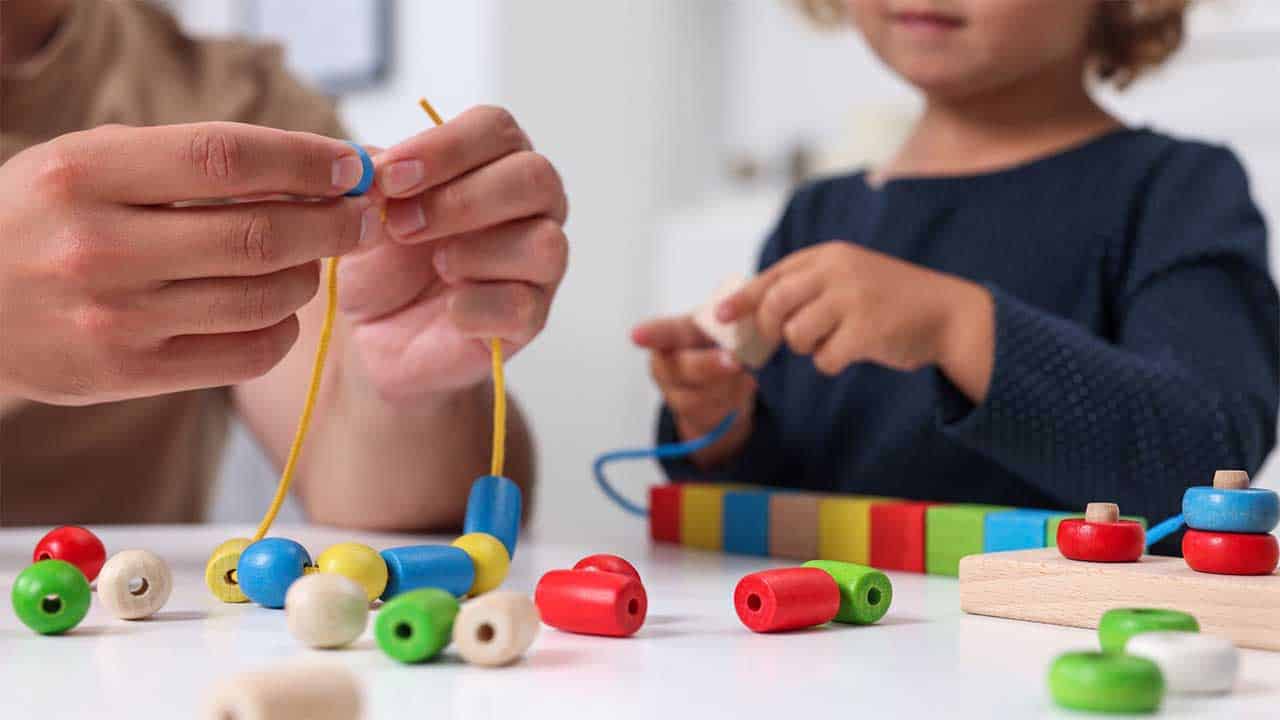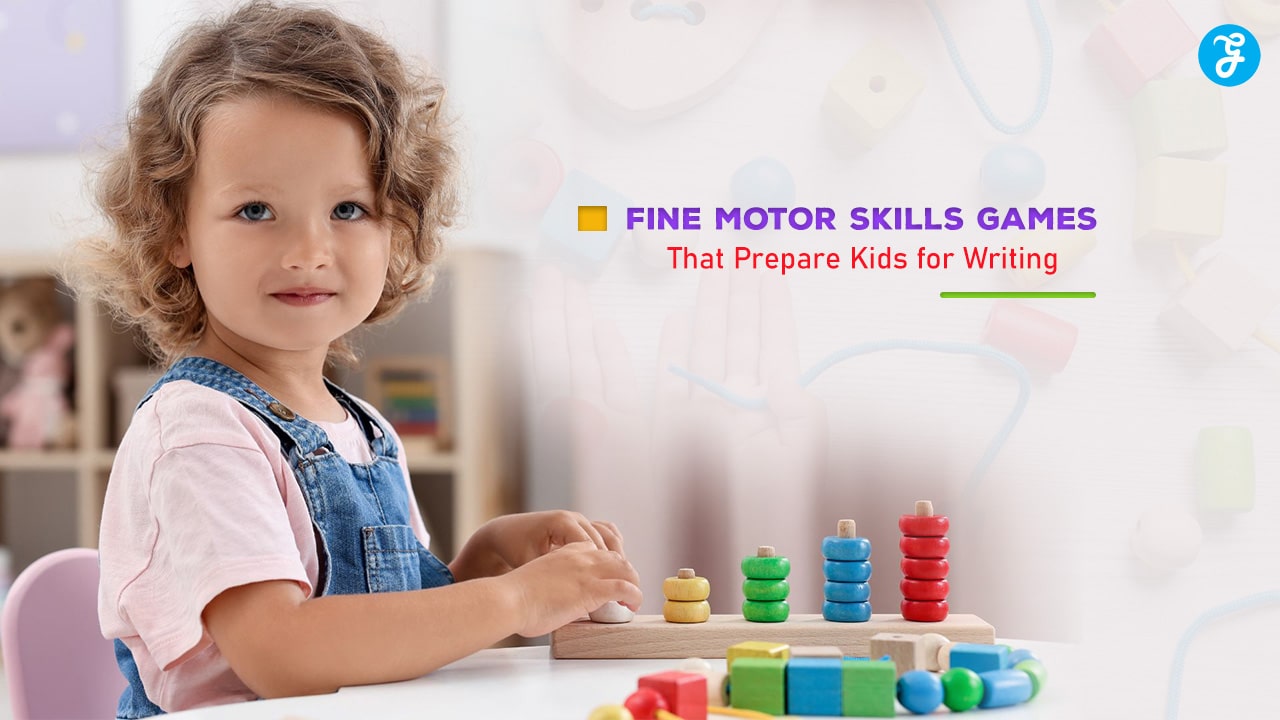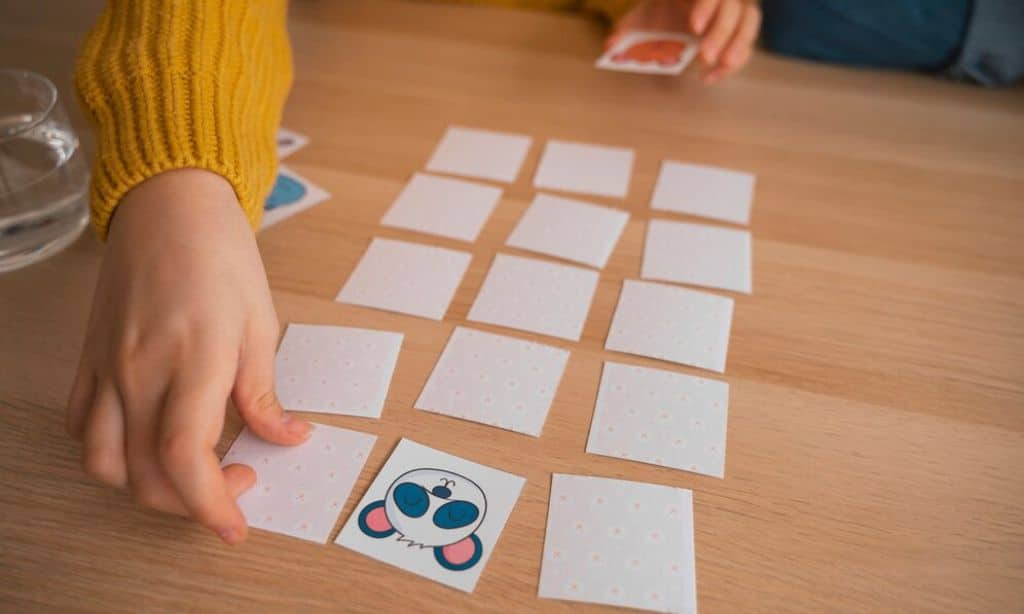Fine motor skills are essential for children, especially when they begin their journey into writing.
These skills involve the use of small muscles in the hands, fingers, and wrists, enabling kids to hold a pencil, form letters, and ultimately write with ease.
Before learning to write, children must develop control, coordination, and strength in their hands and fingers through fun and engaging activities that hone these skills.
In this article, we’ll explore 12 fine motor skills games that not only prepare kids for writing but also make learning enjoyable and interactive.
These activities are designed to improve dexterity, hand-eye coordination, and precision—all key components of writing readiness.
1. Play-Doh or Clay Modeling

Why It’s Effective:
Playing with Play-Doh or clay is one of the best ways to develop hand and finger strength in children.
The squishing, rolling, and shaping movements strengthen the small muscles required for writing.
Additionally, this activity boosts creativity and sensory exploration, making it a perfect choice for young learners.
How to Play:
- Shape formation:
Encourage kids to roll the clay into balls, flatten it into pancakes, or mold it into different shapes like animals, letters, or numbers.
Rolling snakes and making small balls help children practice fine finger movements essential for holding a pencil.
- Using tools:
Introduce tools like plastic knives, rolling pins, or cookie cutters to enhance the experience.
Children can cut, stamp, or press the dough into different shapes, which requires precise hand movements, mimicking the control needed for writing.
- Letter tracing:
For a more advanced challenge, you can have kids trace letters in the dough using their fingers or a small stick, which reinforces the movements required to form letters.
Benefits:
Playing with Play-Doh strengthens hand muscles, improves finger dexterity, and enhances coordination, all while engaging a child’s creativity.
It also fosters the development of hand-eye coordination and prepares kids for gripping writing tools like pencils or crayons.
2. Bead Stringing
Why It’s Effective:
Stringing beads onto a thread, pipe cleaner, or shoelace requires precision and focus.
This activity is excellent for building the pincer grasp, a fine motor skill involving the thumb and forefinger working together.
This skill is crucial for pencil control, handwriting, and other tasks requiring delicate finger movements.
How to Play:
- Basic stringing:
Provide kids with large, colorful beads and a thick string or pipe cleaner. Encourage them to thread the beads one by one.
As they become more comfortable, introduce smaller beads to make the task more challenging.
- Pattern creation:
To make the activity more engaging, ask kids to follow a color or shape pattern while stringing the beads.
This adds an element of cognitive development as they learn to recognize and replicate patterns.
- Threading letters:
For older kids, you can use letter beads and have them create simple words or their name.
This combines fine motor practice with early literacy skills, making it both fun and educational.
Benefits:
Bead stringing develops fine motor control, finger strength, and hand-eye coordination.
It also teaches kids patience, concentration, and the ability to follow a sequence—all of which are important skills for writing.
3. Cutting with Scissors
Why It’s Effective:
Cutting with scissors is a vital activity for developing hand strength and coordination.
It requires kids to open and close their hands repeatedly, strengthening the muscles used for holding a pencil.
Additionally, cutting helps children improve their focus and hand-eye coordination as they follow lines and shapes.
How to Play:
- Simple cutting lines:
Start by giving children easy, straight lines to cut along on a piece of paper.
Once they master straight lines, you can progress to curves, zigzags, and eventually more complex shapes like circles or triangles.
- Cut and create:
Incorporate the cutting activity into a craft project.
For instance, ask kids to cut out shapes and use them to create a picture or collage.
They can cut out flowers, stars, or animals from colorful paper and then glue them together.
- Safety first:
Always use child-safe scissors with rounded tips and supervise closely to ensure the child cuts safely and correctly.
Benefits:
Cutting with scissors improves hand strength, hand-eye coordination, and bilateral coordination (using both hands together).
These skills are essential for controlled pencil movements and writing neat, legible letters.
4. Lacing Cards
Why It’s Effective:
Lacing cards help develop fine motor control and hand-eye coordination by requiring children to guide a lace or string through a series of small holes.
This activity closely mimics the same precision and coordination needed for writing and drawing lines and curves.
How to Play:
- Basic lacing:
Start with simple cards that have large holes and thick laces.
Kids can lace around the edges of shapes like hearts, stars, or animals.
As they gain confidence, you can provide more complex patterns with smaller holes.
- Themed lacing cards:
You can find or create themed lacing cards featuring animals, letters, numbers, or seasonal images to make the activity more engaging.
Encourage kids to lace in a particular pattern, such as going in and out or looping around the edges.
- Design your own:
You can make homemade lacing cards by cutting out shapes from cardboard and punching holes along the edges.
Kids can even paint or decorate the cards before starting the lacing process.
Benefits:
Lacing cards help kids practice hand-eye coordination, concentration, and finger dexterity.
These skills are important for controlling writing tools and improving handwriting precision.
5. Clothespin Grabbing Game
Why It’s Effective:
Using clothespins to grab and move objects requires children to use the pincer grasp—the same grip used to hold a pencil.
This activity strengthens the small muscles in their hands and fingers, improving their ability to manipulate objects and hold writing tools properly.
How to Play:
- Grabbing objects:
Scatter small objects like pom-poms, buttons, or cotton balls on a table.
Give children clothespins and ask them to pick up the objects one by one and place them into a container.
This helps build strength and control in the fingers.
- Sorting challenge:
Make the activity more engaging by adding a sorting element.
Ask kids to pick up objects of different colors or sizes and place them into specific containers.
This not only enhances their motor skills but also promotes cognitive development as they categorize objects.
- Timed challenges:
Introduce a timed element to the game.
For example, challenge kids to pick up and sort a certain number of objects within a set time limit, making the activity more exciting and rewarding.
Benefits:
This activity builds finger strength, coordination, and the ability to manipulate small objects, all of which are essential for pencil control and neat handwriting.
6. Dot-to-Dot Activities
Why It’s Effective:
Dot-to-dot activities are an engaging way to help kids practice fine motor skills, hand-eye coordination, and early writing techniques.
By connecting dots in the correct sequence, children practice the controlled movements needed to draw lines and shapes, which directly translates to letter formation.
How to Play:
- Basic dot-to-dot:
Start with simple dot-to-dot puzzles that form basic shapes or objects.
As kids progress, introduce more complex puzzles that require connecting more dots and creating intricate designs.
- Number or letter sequences:
Incorporate learning by using dot-to-dot puzzles that follow numerical or alphabetical sequences.
This not only improves fine motor skills but also reinforces counting or letter recognition.
- Creative twist:
After completing the dot-to-dot puzzle, let the kids color in the picture or add their own details, turning it into a full art project.
Benefits:
Dot-to-dot activities improve hand-eye coordination, fine motor precision, and the ability to control pencil movements—essential skills for learning how to write letters and numbers.
7. Tearing and Scrunching Paper
Why It’s Effective:
Tearing paper and scrunching it into small balls helps strengthen the muscles in a child’s hands and fingers.
These actions mimic the same motions involved in writing, making this an ideal exercise for building fine motor control.
This activity also provides a sensory experience that can be calming for kids.
How to Play:
- Basic tearing:
Provide sheets of paper (old newspapers or construction paper work well) and encourage kids to tear them into small strips or pieces.
This action requires strength and precision, helping to build hand muscles.
- Scrunch and glue:
After tearing the paper, ask kids to scrunch the pieces into small balls.
They can then glue the scrunched paper onto a larger sheet to create pictures or designs, such as trees, flowers, or animals.
- Paper mosaics:
Turn torn paper into a mosaic art project by having children fill in shapes or letters with small pieces of torn paper, adding both a creative and educational element.
Benefits:
Tearing and scrunching paper help build hand strength, finger dexterity, and fine motor control.
These skills are necessary for gripping writing tools and forming letters.
8. Tweezers or Tongs Game
Why It’s Effective:
Using tweezers or tongs to pick up small objects helps children strengthen their fine motor skills, particularly the pincer grasp.
This activity mimics the same movements required to hold and control a pencil, making it a great pre-writing exercise.
How to Play:
- Sorting game:
Scatter small items like beads, buttons, or pom-poms on a table.
Provide tweezers or tongs and have the kids pick up the items and place them into containers.
Add a sorting element by asking them to sort the objects by color or size.
- Timed challenges:
Make the game more exciting by introducing timed challenges.
Ask kids to pick up and sort as many objects as they can within a set time limit, encouraging quick thinking and precision.
- Themed games:
You can make this activity more engaging by creating themed games.
For instance, use animal-shaped beads or objects and ask kids to pick up specific animals with their tweezers.
Benefits:
This activity strengthens finger muscles and improves hand-eye coordination, making it easier for children to control pencils, crayons, or markers when they start writing.
9. Finger Painting
Why It’s Effective:
Finger painting is a creative and sensory-rich activity that helps develop fine motor skills.
Using their fingers to create shapes, patterns, and letters allows kids to practice the hand movements necessary for writing in a fun and artistic way.
How to Play:
- Free painting:
Provide children with washable finger paints and large sheets of paper. Let them use their fingers to create shapes, lines, and patterns.
This activity strengthens finger coordination and hand control.
- Letter and number practice:
Encourage kids to “write” letters or numbers using their fingers in the paint.
This is an excellent way for them to practice the motions of writing without the pressure of holding a pencil.
- Themed art:
Give children specific themes, such as animals, flowers, or weather patterns, and ask them to create pictures based on the theme.
This adds a layer of creativity while developing fine motor skills.
Benefits:
Finger painting develops hand strength, coordination, and the ability to form shapes, which are essential for writing letters.
The sensory experience also helps kids connect with the tactile nature of learning.
10. Sticker Picking and Placing
Why It’s Effective:
Peeling and placing stickers requires fine motor precision and the use of the pincer grasp, both of which are necessary for writing.
It’s a simple yet effective way to engage kids while improving their dexterity and hand control.
How to Play:
- Sticker placement:
Provide a sheet of stickers and ask kids to peel them off and place them onto a piece of paper or in a coloring book.
This activity requires precise finger movements and hand-eye coordination.
- Sticker puzzles:
Create puzzles or patterns where kids must place the stickers in specific spots.
For example, draw a simple design like a butterfly and ask them to place stickers in certain sections to complete the design.
- Learning letters:
You can use letter stickers to introduce basic literacy.
Ask children to spell out their names or simple words using letter stickers, combining motor skills practice with learning.
Benefits:
This activity strengthens fine motor control and precision, preparing children for tasks like gripping a pencil, drawing lines, and forming letters.
11. Pegboards and Peg Puzzles
Why It’s Effective:
Pegboards and peg puzzles help kids develop their hand-eye coordination and fine motor skills by requiring them to manipulate small pegs or pieces.
These activities closely mimic the controlled hand movements needed for writing.
How to Play:
- Basic pegboards:
Provide a pegboard and colorful pegs. Ask kids to place the pegs into the holes to create patterns or designs.
This encourages precise hand movements and improves finger control.
- Peg puzzles:
Use puzzles with pegs attached to each piece.
Ask children to pick up the puzzle pieces and fit them into the corresponding spaces.
This helps improve problem-solving skills while also developing fine motor abilities.
- Creative designs:
Encourage children to use pegs to create pictures, letters, or numbers on the board.
This can introduce early writing skills while practicing fine motor coordination.
Benefits:
Pegboards and peg puzzles build fine motor control, hand-eye coordination, and concentration, all of which are crucial for developing writing skills.
12. Building with Legos or Small Blocks
Why It’s Effective:
Building with small blocks or Legos requires kids to use their fingers to grasp, position, and stack small objects.
This improves hand strength, dexterity, and the coordination necessary for gripping a pencil and controlling writing movements.
How to Play:
- Basic building:
Give kids a set of Legos or small building blocks and encourage them to create structures, patterns, or objects.
The act of fitting the pieces together requires precision and coordination.
- Themed building challenges:
Create fun challenges by asking kids to build specific objects, such as a house, car, or animal.
This adds an element of creativity and problem-solving to the activity.
- Building letters or numbers:
For a more educational twist, ask children to build the shapes of letters or numbers using the blocks, reinforcing early literacy and numeracy skills.
Benefits:
Building with Legos or small blocks enhances hand strength, finger coordination, and fine motor control, preparing kids for tasks like writing letters, drawing shapes, and holding writing tools properly.
Takeaway
Developing fine motor skills is an essential part of preparing children for writing.
These 12 fine motor skills games provide fun and engaging ways to strengthen hand muscles, improve coordination, and enhance the control needed for tasks like gripping a pencil and forming letters.
By incorporating these activities into daily play, parents and educators can ensure that children are building the skills necessary for writing success, all while having fun and staying engaged.










































